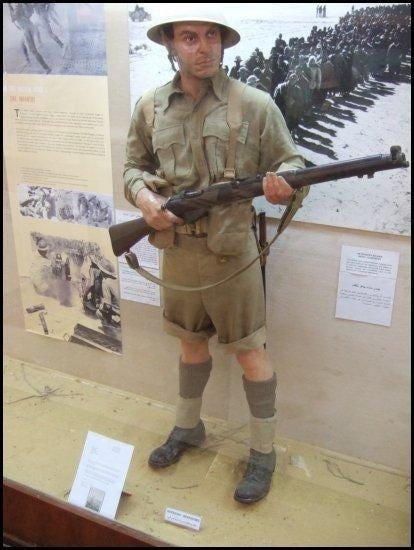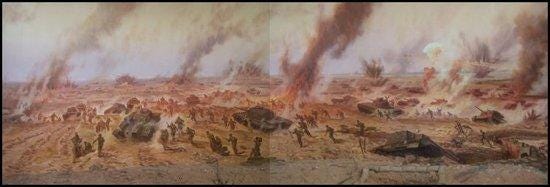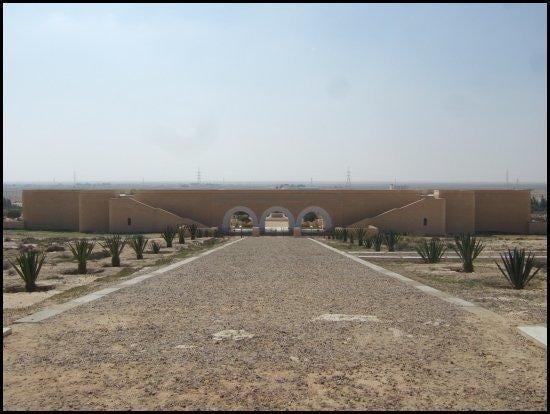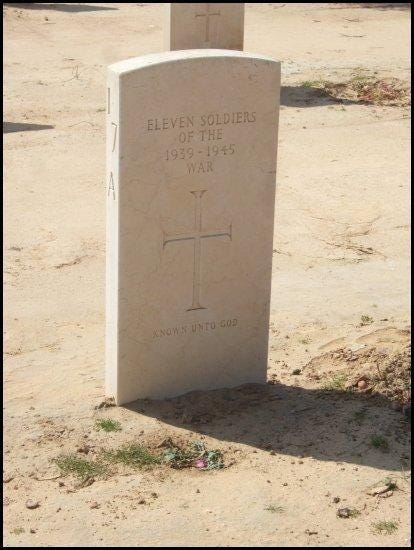A Journey Through History: El Alamein and Its Legacy
Written on
Chapter 1: Discovering El Alamein
On February 24, I ventured to El Alamein, a small town situated about 105 kilometers west of Alexandria along the coastal highway. While it may be unfamiliar to many, this location was the backdrop for one of the most crucial battles of World War II. Today, El Alamein is a tranquil area primarily focused on seasonal tourism, attracting visitors to its Mediterranean beaches. Yet, it also draws a steady stream of Commonwealth, German, and Italian tourists interested in its captivating museum and war cemeteries.
The Afrika Korps, led by Rommel, launched an invasion of North Africa from occupied southwestern Europe early in the war, aiming to advance through the desert to Egypt. The Suez Canal, vital for both the Allies and the Axis powers, became a key target. In 1940, Italian forces initiated their invasion, and once the Germans joined, it created significant concerns for Allied High Command.
Troops from Britain, India, Australia, New Zealand, South Africa, Canada, France, Greece, Poland, and eventually the United States participated in this drawn-out conflict, which spanned nearly three years across Libya and Egypt. The turning point came in November 1943 when the Axis forces were forced to retreat into Tunisia, resulting in over 250,000 prisoners of war.
El Alamein is widely regarded as a pivotal moment in this theater of war, paralleling the significance of Stalingrad in the overall conflict.

Chapter 2: A Visit to the Museum
The journey to the museum requires a bit of a trek from the coastal road, but the experience is rewarding. Established in 1956 and later enhanced by President Mubarak in the 1990s, the museum exceeded my expectations. It was surprisingly absent from my guidebook.
Inside, visitors can explore dedicated rooms for the German, Italian, and British armies, along with a central area featuring a large map that outlines the various military movements throughout the conflict.

The exhibits are engaging, displaying an array of uniforms, weapons, and photographs that document both the battles and the daily lives of soldiers. Information cards provide insights into notable commanders like Wavell, Auchinleck, Montgomery, and Rommel, although some descriptions are challenging to decipher. One point of concern was the display of deteriorating live ammunition near the exit — perhaps intended to encourage swift departures.

The museum also delves into less obvious aspects of the war, such as the roles played by navies and air forces, as well as the Special Services operating behind enemy lines. The sterile nature of desert warfare, which often excluded civilians, allowed military leaders to refine their strategies in a more controlled environment. The conflict was seen less as a battle of hatred and more as a game of strategy.

The contributions of Australian forces are prominently featured, especially their role during the siege of Tobruk, where they successfully defended the strategic Libyan port for over five months, much to Rommel's frustration. The complexities of these narratives are evident, as some details regarding the siege's duration vary.
Surrounding the museum, visitors can find a collection of tanks and artillery pieces, remnants of the battlefield displayed in various states of preservation. This museum, despite its remote location, stands out as a remarkable tribute to history.

Chapter 3: Reflection at the Commonwealth War Cemetery
Just a short distance from the museum lies the Australian War Memorial adjacent to the Commonwealth War Cemetery. This site overlooks the plains where significant battles occurred, though the frontline extended over 10 kilometers, making specific locations difficult to pinpoint. While I considered exploring the area, the presence of unexploded ordnance and mines in the region gave me pause.
Instead, I chose to pay my respects at the cemetery, where more than 7,300 soldiers are interred, including 4,074 British, 1,234 Australians, 1,108 New Zealanders, and 500 South Africans. Additionally, the names of 12,600 soldiers without known graves are commemorated here, mostly British and Indian. As with most Commonwealth War Cemeteries, it is impeccably maintained, providing a serene space to honor those who sacrificed their lives.

In conclusion, the sacrifices made at El Alamein were monumental in shifting the tide of the war, and the memory of those who fought remains vital.
This video delves into the secret operations and strategies used by the Third Army during the Battle of El Alamein, providing further insight into this pivotal moment in history.
This video explores the Second Battle of El Alamein, highlighting Montgomery's masterful tactics and the significant contributions of Allied forces in this critical conflict.